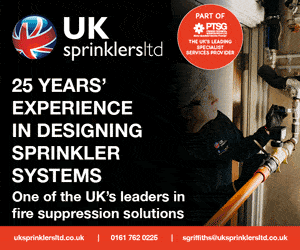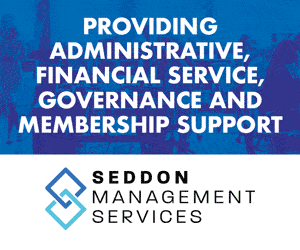Is the Facilities Management industry ready to embrace a future shaped by different ways of thinking?
Andrew Hulbert, Vice Chair of Pareto FM explores how fostering inclusive environments for diverse cognitive approaches can spark creativity and innovation in FM. From rethinking recruitment to redesigning workplaces, he tackles the changes needed to support a broader spectrum of thinkers and asks, are traditional practices holding us back from unlocking the potential of untapped talent?
Creating work environments that cater to the diverse needs of all employees, including those who are neurodivergent, is essential for fostering inclusivity and maximising productivity. As organisations increasingly recognise the value of neurodiverse talent, the workplace must evolve to support and empower these individuals. Embracing what some call the “Neurospicy Revolution” is not just about inclusion; it’s about unlocking potential, driving innovation, and enhancing overall business performance.
Why Supporting Neurodiverse Employees Matters
Workplaces that accommodate neurodivergent individuals benefit from diverse thinking styles, problem-solving approaches, and creativity that can drive innovation. According to Deloitte Insights (Deloitte, 2024), organisations that embrace neurodiversity can see up to a 30% improvement in team productivity, demonstrating the clear link between inclusivity and business performance. Further supporting this, a study by JPMorgan Chase (JPMorgan Chase, 2024) found that their neurodivergent employees were up to 140% more productive than their neurotypical colleagues in certain roles, such as data analysis and quality control. This data reinforces the idea that neurodivergent individuals bring unique skills that can significantly enhance business operations.
In addition to productivity gains, fostering a neuroinclusive workplace aligns with broader ESG (Environmental, Social, and Governance) goals. The Chartered Institute of Personnel and Development (CIPD, 2024) highlights that organisations with strong inclusion strategies experience higher levels of employee satisfaction, engagement, and retention, all of which contribute to a more positive and collaborative workplace culture.
Strategies for Inclusive Workplace Design
1. Sensory Considerations Many people are sensitive to sensory stimuli such as noise, lighting, and textures. According to workplace design specialists HOK (HOK, 2024), implementing adjustable lighting, minimising background noise, and providing quiet zones can help reduce sensory overload. Simple solutions such as offering noise-cancelling headphones, soundproof booths, or quiet work areas can enable individuals to work more comfortably and productively.
2. Flexible Workspaces Research published by Work Design Magazine (Work Design Magazine, 2024) emphasises the importance of offering a variety of work settings—private offices, collaborative areas, and adjustable workstations—allowing employees to choose spaces that best suit their needs. Providing flexible work arrangements, including remote and hybrid options, further supports neurodivergent employees by giving them greater control over their work environment, which can lead to improved job satisfaction and efficiency.
3. Clear Signage and Wayfinding Utilising clear, consistent signage and visual cues aids navigation and reduces anxiety for employees. According to Blueprint Interiors (Blueprint Interiors, 2024), implementing simple, colour-coded pathways and easily understandable symbols can make workplaces more intuitive and accessible, contributing to a stress-free environment that supports efficiency and focus.
4. Quiet Rooms and Wellness Spaces The importance of quiet rooms and wellness spaces is highlighted in a report by IE
UK (IE UK, 2024), which underscores the need for designated areas where employees can retreat and recharge when needed. These spaces, featuring comfortable seating, calming visuals, and minimal stimuli, can support emotional regulation and help manage workplace stress.
5. Structured Communication and Training Providing structured communication and neurodiversity awareness training is crucial to fostering an inclusive workplace. Deloitte Insights (Deloitte, 2024) recommends offering training for managers and colleagues to improve understanding and support. Adapting communication styles—such as offering written instructions alongside verbal ones and ensuring regular check-ins—can enable neurodivergent employees to thrive.
The Business Case for Neurodiverse Inclusion
Beyond ethical and social considerations, the business case for embracing neurodiversity is compelling. Companies like Microsoft, SAP, and EY have implemented neurodiverse hiring programmes and seen tangible benefits, including improved innovation, enhanced problem-solving capabilities, and a stronger bottom line. As mentioned in JPMorgan Chase’s report (JPMorgan Chase, 2024), their neurodivergent employees have contributed significantly to operational efficiency, further proving that inclusive workplaces are a key driver of success.
Moreover, CIPD (CIPD, 2024) stresses that fostering an inclusive workplace can reduce turnover and absenteeism. Employees who feel understood and supported are more likely to stay with an organisation, reducing recruitment and training costs. By making relatively simple adjustments, businesses can tap into a highly skilled, often underutilised talent pool while boosting morale and engagement across the board.
Conclusion
The Neurospicy Revolution represents an opportunity for organisations to rethink their approach to workplace design and culture. As demonstrated by sources such as Deloitte Insights, CIPD, and Work Design Magazine, prioritising inclusive design, providing flexibility, and embracing the strengths of neurodivergent individuals can unlock new levels of innovation, productivity, and employee satisfaction. Thoughtful adjustments in sensory considerations, workspace flexibility, and structured communication can make a significant difference in creating a truly inclusive and high-performing workplace.
You can explore this subject further in the Neurospicy Revolution session at The Workplace Event on Tuesday 8th April 2025 at 3.30pm
























































